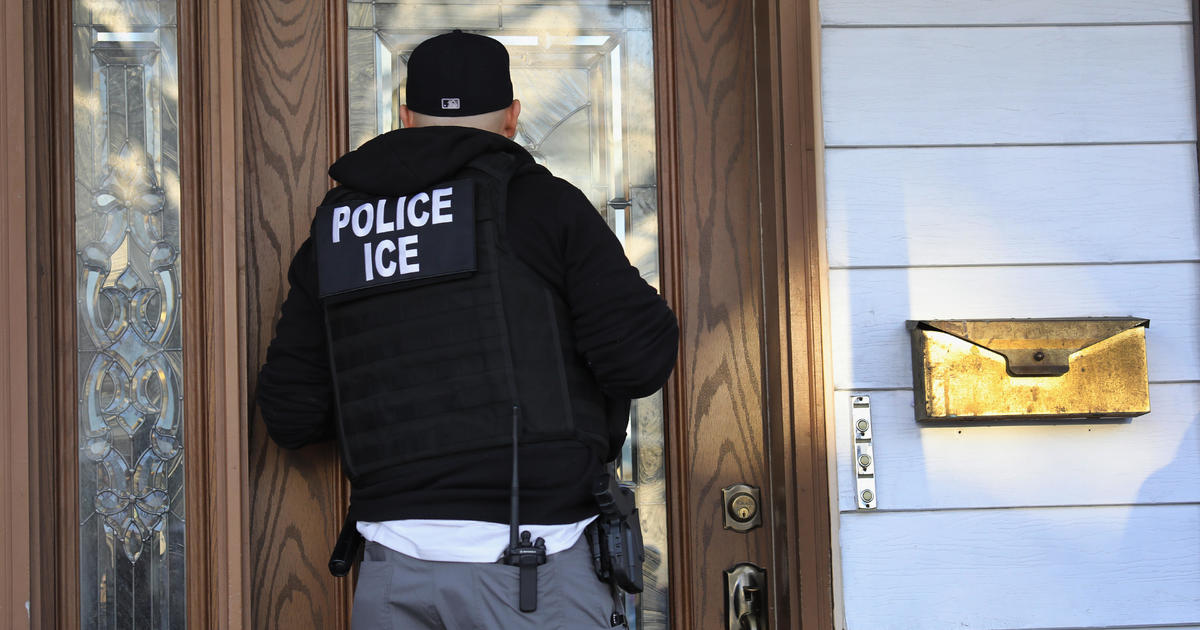President-elect Donald Trump’s appointed “border czar” Tom Homan has said that he wants to prioritize deporting noncitizens with criminal histories when Trump’s second term starts in January.
This follows recent high-profile criminal cases involving undocumented immigrants, including the murder of Georgia nursing student Laken Riley by a Venezuelan immigrant who crossed the U.S. southern border illegally.
But in interviews, Homan and other top Republicans have shared contradictory and inflated figures about the overall number of noncitizens who Immigration and Customs Enforcement (ICE) officials say fall into this category.
In a recent interview with Fox News, Homan said there are “over 1.5 million convicted criminal aliens in this country with orders for removal who we’ll be looking for.” The Trump transition team has said this number includes some migrants who have crossed into the country illegally, although they are not considered “convicted criminal aliens.”
John Moore / Getty Images
House Speaker Mike Johnson has claimed in recent weeks that the number of migrants apprehended for committing violent crimes specifically is “by some counts, as many as 3 or 4 million people.”
However, Immigration and Customs Enforcement provided much lower estimates to Congress.
As of July 21, ICE’s national docket, which tracks immigrants facing deportation proceedings, listed roughly 660,000 noncitizens with criminal histories, including 436,000 convicted criminals and 227,000 with pending criminal charges.
This includes noncitizens in ICE detention and those not detained by the agency.
There are only estimates of the number of noncitizens currently in the U.S. As of 2022, there were roughly 24.5 million noncitizens — including at least 11 million unauthorized immigrants and 13.5 million people who are lawful permanent residents or temporary lawful residents, according to estimates by Pew Research Center based on the latest Census data.
By Homan’s numbers, around 6% of noncitizens would be convicted criminals. By Johnson’s numbers closer to 12% of the noncitizens would be criminals, or as much as 24% of the unauthorized population.
According to ICE’s figures closer to 2.6% of the noncitizens in the U.S. have criminal histories.
Response from Trump’s transition spokesman
The agency’s totals are far below the millions suggested by Homan and Johnson, and ICE’s figures remain the most accurate available for tracking noncitizens with criminal histories, according to C. Mario Russell, executive director for the Center for Migration Studies, a think tank that also supports policies that safeguard migrant rights.
Johnson’s office did not respond to a request for clarification at time of publication.
Brian Hughes, a Trump-Vance transition spokesman, told CBS News that Homan was considering the number of migrants who have crossed illegally into the U.S. who evaded border patrol, sometimes called “gotaways” by immigration and border security officials.
“Tom Homan is right–nearly 2 million ‘gotaways’ have evaded border patrol under the Biden-Harris wide-open border, which is more than four times the average under President Trump,” Hughes said.
Border Patrol estimates that roughly 1.7 million migrants have evaded apprehension since the start of fiscal year 2021. However, there is no official data on the number of so-called “gotaways” with criminal records.
There were also “gotaways” during the Trump administration but the average number during Trump’s first three years in office, before immigration fell during COVID-19, was four times lower than the totals in fiscal year 2022 and 2023, according to testimony by Steven A. Camarota, the director of research at the Center for Immigration Studies.
In some interviews, Homan has also cited lower figures more in line with ICE data. On Nov. 14, for example, Homan told NewsNation, “authorities have identified more than 700,000 undocumented immigrants with criminal convictions.”
What ICE’s data shows about the number of noncitizens with criminal histories
Noncitizens — including those with green cards — can lose their legal right to be in the U.S. after committing a crime. Many of the people ICE tracks remain incarcerated and can be deported only after serving their sentences.
Data suggests many of the 436,000 convicted criminals on this list, including over 13,000 convicted of murder and 62,000 people convicted of assault, have been in the U.S. for years. Non-violent offenders are also on ICE’s docket, including more than 125,000 people convicted of or facing traffic offenses.
In 2016, under the Obama administration, there were 368,574 convicted criminals in ICE’s non-detained docket, according to data published by the Department of Homeland Security’s Office of Inspector General. In June 2021, a few months into the Biden administration, there were 405,786 convicted criminals on the list.
Some criminal noncitizens remain in the U.S. for years because they come from countries that don’t accept or limit U.S. deportations, including Cuba, Venezuela, and China. Others are legally protected from deportation under United Nations convention because they face a credible threat of torture if they return to their home countries.
Government statistics indicate that a relatively small fraction of migrants processed by Border Patrol have criminal records in the U.S. or in other countries that share information with American officials.
Additionally, although the data is not exhaustive, available studies suggest that undocumented migrants are incarcerated less frequently than native-born Americans.
Checkout latest world news below links :
World News || Latest News || U.S. News
The post Trump’s “border czar” claims more than 1.5 million noncitizens in the U.S. have criminal convictions. Here’s a fact check. appeared first on WorldNewsEra.

